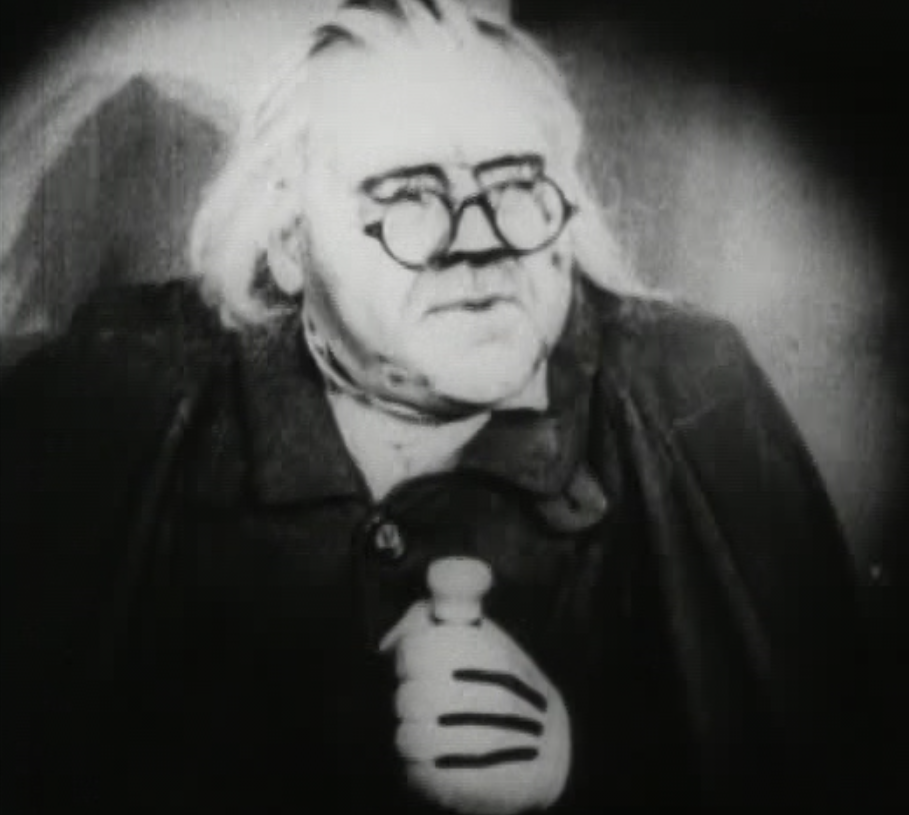Movie Review: The Cabinet of Dr. Caligari (1920) directed by Robert Wiene
The frame story begins with Franciz (Friedrich Feher) having just been told by another man (Hans Lanser-Ludloff) about the supernatural events that drove him from his home. Franciz replies that the events he and his fiancée Jane Olsen (Lil Dagover) experienced were even more chilling. We then flash back to the announcement of a fair in the city where Franciz and Jane then lived. Their friend Alan (Hans Heinrich von Twardowski) sees an ad for the fair and asks Franciz to come with him. Despite their both being in love with Jane, the two are still good friends.

Meanwhile, a mountebank calling himself Doctor Caligari (Werner Krauss) tries to get a license to perform at the fair. The Town Clerk does allow this, but not before he’s very rude to the applicant. By what I am sure is a total coincidence, the Town Clerk is murdered that very night.
Alan and Franciz go to the fair and visit Dr. Caligari’s concession. The act turns out to be the supposed doctor displaying a “somnambulist” he calls Cesare (Conrad Veidt) who he awakens from deep sleep. Caligari claims that Cesare has supernatural knowledge of the future. When Alan foolishly enquires how long he will live, Cesare tells Alan he will be dead by dawn.
When Alan is murdered that night, Franciz’ logical first suspect is Cesare. But is that really the case?
This 1920 silent German film is one of the most famous movies ever made, and even if you haven’t seen it, you’ve probably heard of it if you have an interest in film history, horror, or German Expressionism. The last is most obvious in the nightmarish set design.
Conrad Veidt is chilling as Cesare, the sleepwalking killer, scrambling over the rooftops on his deadly mission. And within context, Dr. Caligari makes a very sinister figure.
There’s a couple of nice touches. An unrelated criminal attacks an old woman in hopes that his murder will be mistakenly credited to the mysterious previous ones. And Dr. Caligari has a “lifelike” dummy of Cesare that he puts in the cabinet while the somnambulist is away to create an alibi.
The title card says that this is a retelling of an 11th Century legend, though that legend itself is made up for the movie–and then there’s the infamous twist ending that turns most of what we’ve learned on its head.
It does have to be remembered that this movie is still quite early in the history of films, and silent, so the acting can come off artificial and stiff, and the lighting is sometimes dubious. The set design actually helps by being so weird that the viewer might not feel the need to nitpick details so much.
Content note: Murder, naturally, though the actual deed is suggested by shadow, not directly shown. Some period depiction of mental illness that may come off badly to modern viewers. Older teens should be fine; younger viewers may not be ready for the conventions of silent film.
This is one of those movies that’s more important than good, but it’s good enough that it’s worth seeing for any fan of horror or film history buff.

